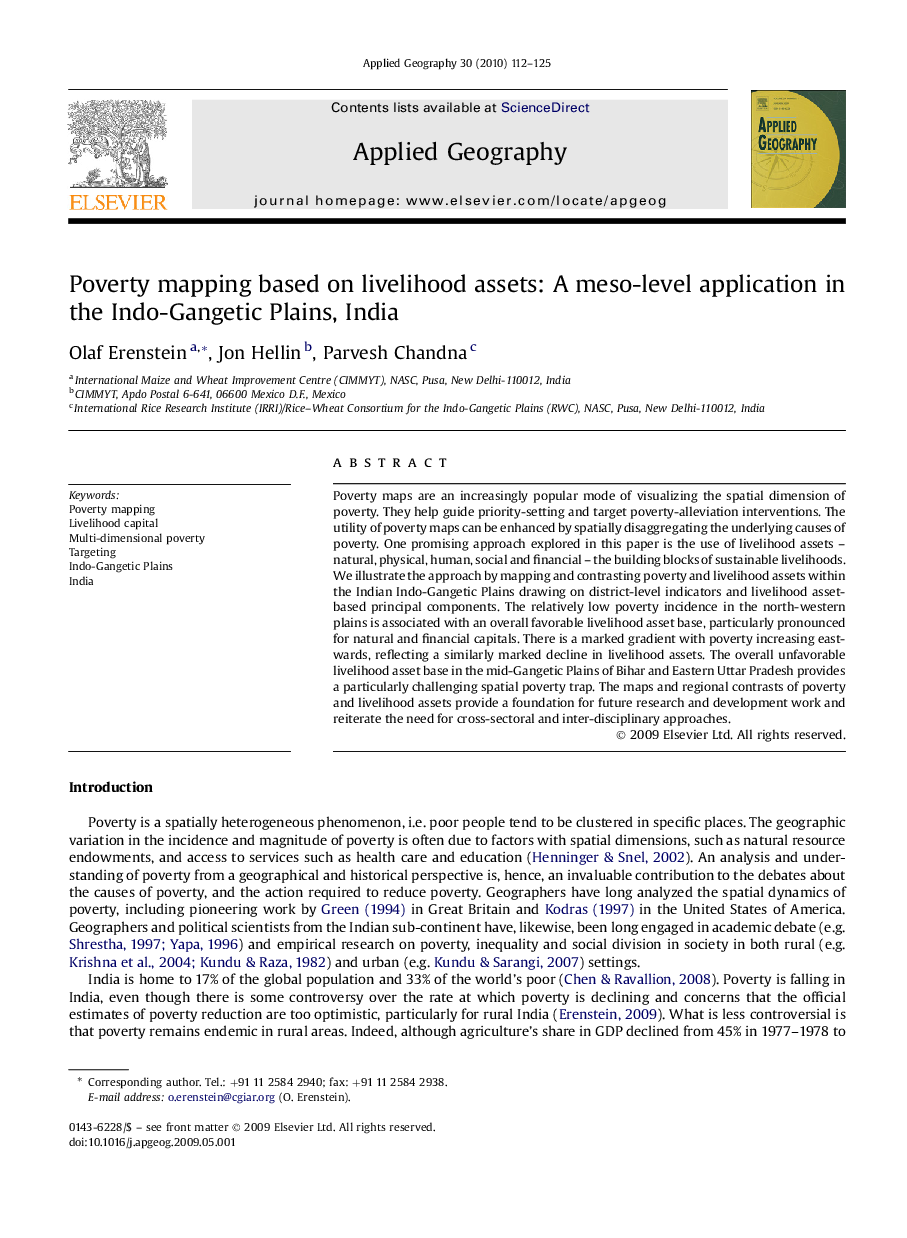| Article ID | Journal | Published Year | Pages | File Type |
|---|---|---|---|---|
| 83806 | Applied Geography | 2010 | 14 Pages |
Poverty maps are an increasingly popular mode of visualizing the spatial dimension of poverty. They help guide priority-setting and target poverty-alleviation interventions. The utility of poverty maps can be enhanced by spatially disaggregating the underlying causes of poverty. One promising approach explored in this paper is the use of livelihood assets – natural, physical, human, social and financial – the building blocks of sustainable livelihoods. We illustrate the approach by mapping and contrasting poverty and livelihood assets within the Indian Indo-Gangetic Plains drawing on district-level indicators and livelihood asset-based principal components. The relatively low poverty incidence in the north-western plains is associated with an overall favorable livelihood asset base, particularly pronounced for natural and financial capitals. There is a marked gradient with poverty increasing eastwards, reflecting a similarly marked decline in livelihood assets. The overall unfavorable livelihood asset base in the mid-Gangetic Plains of Bihar and Eastern Uttar Pradesh provides a particularly challenging spatial poverty trap. The maps and regional contrasts of poverty and livelihood assets provide a foundation for future research and development work and reiterate the need for cross-sectoral and inter-disciplinary approaches.
